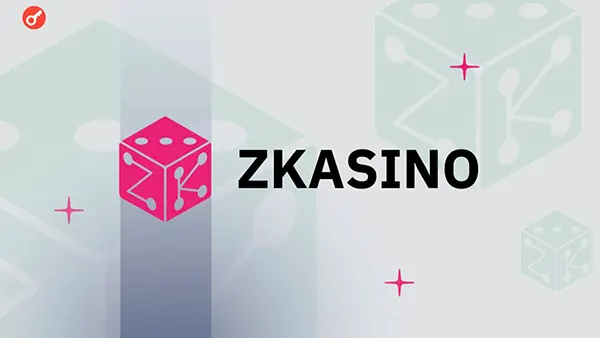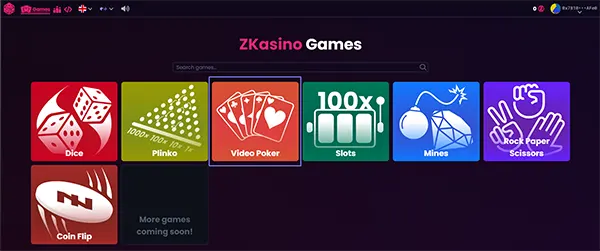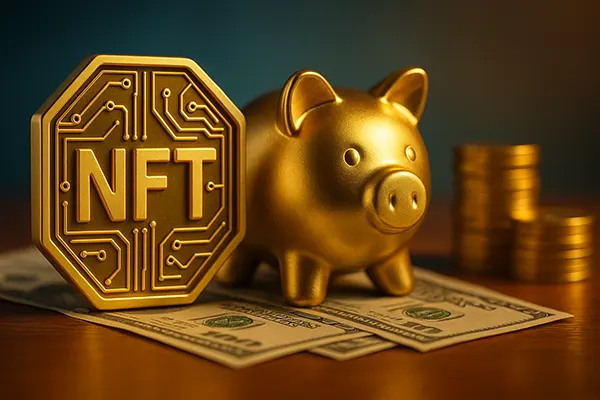
Test-Drive of ZKasino: Is the First zk-Rollup Casino on Ethereum Worth Your Attention?
ZKasino has become one of the most talked-about experiments in the crypto gambling space in 2025. Built on Ethereum and powered by zk-rollup technology, it promises faster transactions, lower fees and a decentralised alternative to traditional blockchain gambling solutions. But is it truly as innovative as it claims to be? Let’s dive into the details.
The Fundamentals of ZKasino
Launched as one of the first casinos utilising zk-rollups on Ethereum, ZKasino aims to solve one of the major pain points in the crypto gambling sector — network congestion and high fees. By leveraging zero-knowledge proofs, the system bundles hundreds of transactions into a single proof, thus reducing the load on Ethereum’s base layer.
This architectural choice allows ZKasino to offer almost instant confirmations and minimal costs per transaction. For users, that means a smoother and faster experience, particularly during peak network periods. ZKasino’s infrastructure reflects a broader movement in the Ethereum ecosystem toward layer 2 scaling solutions.
The project positions itself as a trustless and censorship-resistant option. The absence of a central authority and the use of smart contracts for operations are in line with the principles of decentralisation, though questions remain about governance transparency and contract upgradability.
What Makes ZKasino Different?
Unlike traditional decentralised casinos that often rely on sidechains or centralised servers for scaling, ZKasino is fully embedded into the Ethereum ecosystem. This integration ensures interoperability with Ethereum-native wallets and decentralised applications.
Moreover, ZKasino doesn’t simply port classic games onto the blockchain. It introduces innovative game logic tailored to smart contract dynamics, with provably fair mechanisms and real-time bet verifications. This transparency helps reduce trust issues that often plague crypto gambling operations.
Another key differentiator is the way user identities and activity logs are handled. zk-rollups provide anonymity by default, as transactions are validated without revealing personal information. This privacy feature is gaining traction among users concerned with data leaks and tracking.
Supported Wallets and User Experience
ZKasino supports all major Ethereum-compatible wallets, including MetaMask, Rabby, Trust Wallet and WalletConnect. Users can connect seamlessly through browser extensions or mobile apps, making onboarding relatively smooth even for newcomers.
The interface is minimalistic, with an emphasis on quick accessibility and real-time responsiveness. Once connected, users can deposit Ethereum or other ERC-20 tokens directly to smart contract addresses. Transactions are settled almost instantly, thanks to zk-rollup bundling.
The in-game experience is comparable to Web2 casinos in terms of speed but offers the added advantage of transparency. Every game action — from spin results to bet outcomes — is recorded on-chain and verifiable through block explorers. The backend stability and UX put ZKasino ahead of many early-stage crypto casinos.
Challenges in User Interaction
Despite its technical achievements, some areas of user interaction need refinement. For instance, the minimalistic design sometimes lacks intuitive navigation, which may confuse users unfamiliar with decentralised apps.
Also, ZKasino’s reliance on layer 2 means users must occasionally bridge assets from Ethereum mainnet — a step that may deter casual players. While bridging services are integrated, they still require users to pay gas fees and wait for confirmation periods.
Moreover, customer support options are currently limited to Discord and on-chain FAQ bots. For a project looking to attract mainstream traffic, more robust support mechanisms and multilingual documentation would be beneficial.

Security, Transparency and Trustworthiness
Security-wise, ZKasino uses smart contracts audited by third-party firms. As of June 2025, no critical vulnerabilities have been reported publicly. Additionally, the zk-rollup model inherently protects users from frontrunning attacks and exploits common in public mempools.
Another layer of security lies in self-custody. Funds are not stored in centralised wallets but remain under user control unless actively staked or wagered. This model drastically reduces counterparty risk and aligns with DeFi safety principles.
Transparency is maintained through open-source codebases and public audit reports. However, the community has raised questions about the long-term governance model and whether the development team holds administrative privileges over contracts — a common grey area in crypto project decentralisation.
Is ZKasino Really Trustless?
Technically, ZKasino operates in a trust-minimised environment. Yet the presence of upgradeable contracts suggests there are still central control levers in place. While this is common among early-stage DeFi projects, it introduces a potential vector for abuse if not clearly documented or disclosed.
The lack of a comprehensive DAO (Decentralised Autonomous Organisation) at this stage means strategic decisions remain opaque. Community governance has been hinted at but not yet implemented. This creates a trust gap that could affect long-term adoption.
Still, the fact that ZKasino functions without traditional KYC or custodial control shows a serious commitment to decentralised values. Provided the team follows through on its promises to decentralise further, ZKasino could evolve into a model for zk-powered gambling protocols.





